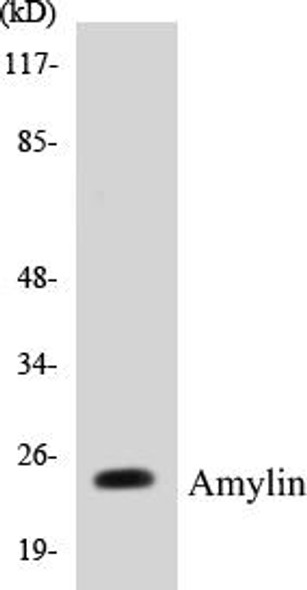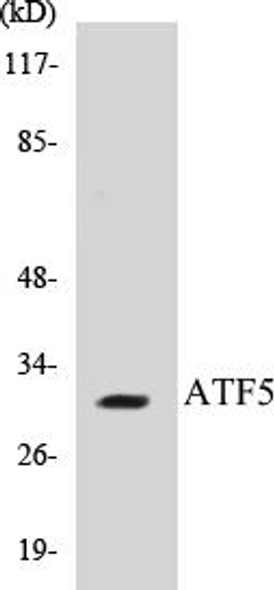Description
Smad4 Colorimetric Cell-Based ELISA Kit
The SMAD4 Colorimetric Cell-Based ELISA Kit is specifically designed for the precise measurement of SMAD4 levels in cell lysates and tissue samples. This kit offers exceptional sensitivity and accuracy, ensuring dependable and consistent results for a variety of research studies.SMAD4 is a key protein involved in the TGF-β signaling pathway, playing a critical role in regulating cell growth, differentiation, and apoptosis. Dysregulation of SMAD4 has been linked to various diseases, including cancer, fibrosis, and developmental disorders, highlighting its importance as a biomarker for understanding disease mechanisms and potential therapeutic targets.
With easy-to-follow protocols and a user-friendly format, the SMAD4 Colorimetric Cell-Based ELISA Kit is an essential tool for researchers studying cellular signaling pathways and investigating the molecular mechanisms underlying disease progression. Trust in this kit to deliver accurate and reliable data for your research needs.
| Product Name: | Smad4 Colorimetric Cell-Based ELISA Kit |
| Product Code: | CBCAB00197 |
| ELISA Type: | Cell-Based |
| Target: | Smad4 |
| Reactivity: | Human, Mouse, Rat |
| Dynamic Range: | > 5000 Cells |
| Detection Method: | Colorimetric 450 nmStorage/Stability:4°C/6 Months |
| Format: | 96-Well Microplate |
The Smad4 Colorimetric Cell-Based ELISA Kit is a convenient, lysate-free, high throughput and sensitive assay kit that can detect Smad4 protein expression profile in cells. The kit can be used for measuring the relative amounts of Smad4 in cultured cells as well as screening for the effects that various treatments, inhibitors (ie siRNA or chemicals), or activators have on Smad4.
Qualitative determination of Smad4 concentration is achieved by an indirect ELISA format. In essence, Smad4 is captured by Smad4-specific primary antibodies while the HRP-conjugated secondary antibodies bind the Fc region of the primary antibody. Through this binding, the HRP enzyme conjugated to the secondary antibody can catalyze a colorimetric reaction upon substrate addition. Due to the qualitative nature of the Cell-Based ELISA, multiple normalization methods are needed:
| 1. | A monoclonal antibody specific for human GAPDH is included to serve as an internal positive control in normalizing the target absorbance values. |
| 2. | Following the colorimetric measurement of HRP activity via substrate addition, the Crystal Violet whole-cell staining method may be used to determine cell density. After staining, the results can be analysed by normalizing the absorbance values to cell amounts, by which the plating difference can be adjusted. |
| Database Information: | Gene ID: 4089, UniProt ID: Q13485, OMIM: 114500/174900/175050/260350/600993, Unigene: Hs.75862 |
| Gene Symbol: | SMAD4 |
| Sub Type: | None |
| UniProt Protein Function: | SMAD4: transcription factor that mediates signal transduction by the transforming growth factor superfamily. The common smad (co-smad). Binds directly to consensus DNA-binding elements in the promoters of target genes. Promotes binding of the Smad2/Smad4/Fast-1 complex to DNA and provides an activation function required for Smad1 or Smad2 to stimulate transcription. |
| UniProt Protein Details: | Protein type:Nuclear receptor co-regulator; DNA-binding; Transcription, coactivator/corepressor Chromosomal Location of Human Ortholog: 18q21.1 Cellular Component: nucleoplasm; centrosome; transcription factor complex; nuclear chromatin; cytoplasm; cytosol; nucleus Molecular Function:collagen binding; identical protein binding; protein binding; transforming growth factor beta receptor, common-partner cytoplasmic mediator activity; protein homodimerization activity; DNA binding; sequence-specific DNA binding; metal ion binding; chromatin binding; transcription factor activity Biological Process: developmental growth; axon guidance; somatic stem cell maintenance; positive regulation of transcription, DNA-dependent; sebaceous gland development; negative regulation of transcription from RNA polymerase II promoter; palate development; BMP signaling pathway; negative regulation of cell proliferation; regulation of transforming growth factor beta receptor signaling pathway; transforming growth factor beta receptor signaling pathway; mesoderm development; neural crest cell differentiation; positive regulation of BMP signaling pathway; transcription initiation from RNA polymerase II promoter; regulation of transforming growth factor-beta2 production; regulation of binding; transcription, DNA-dependent; in utero embryonic development; neuron fate commitment; positive regulation of transforming growth factor beta receptor signaling pathway; gastrulation with mouth forming second; somite rostral/caudal axis specification; SMAD protein complex assembly; formation of anatomical boundary; endothelial cell activation; cell proliferation; ureteric bud branching; response to hypoxia; gene expression; positive regulation of transcription from RNA polymerase II promoter; negative regulation of cell growth; regulation of hair follicle development; negative regulation of protein catabolic process; negative regulation of transcription, DNA-dependent; endoderm development Disease: Pancreatic Cancer; Juvenile Polyposis Syndrome; Myhre Syndrome; Juvenile Polyposis/hereditary Hemorrhagic Telangiectasia Syndrome |
| NCBI Summary: | This gene encodes a member of the Smad family of signal transduction proteins. Smad proteins are phosphorylated and activated by transmembrane serine-threonine receptor kinases in response to TGF-beta signaling. The product of this gene forms homomeric complexes and heteromeric complexes with other activated Smad proteins, which then accumulate in the nucleus and regulate the transcription of target genes. This protein binds to DNA and recognizes an 8-bp palindromic sequence (GTCTAGAC) called the Smad-binding element (SBE). The Smad proteins are subject to complex regulation by post-translational modifications. Mutations or deletions in this gene have been shown to result in pancreatic cancer, juvenile polyposis syndrome, and hereditary hemorrhagic telangiectasia syndrome. [provided by RefSeq, Oct 2009] |
| UniProt Code: | Q13485 |
| NCBI GenInfo Identifier: | 13959561 |
| NCBI Gene ID: | 4089 |
| NCBI Accession: | Q13485.1 |
| UniProt Secondary Accession: | Q13485,A8K405, |
| UniProt Related Accession: | Q13485 |
| Molecular Weight: | |
| NCBI Full Name: | Mothers against decapentaplegic homolog 4 |
| NCBI Synonym Full Names: | SMAD family member 4 |
| NCBI Official Symbol: | SMAD4 |
| NCBI Official Synonym Symbols: | JIP; DPC4; MADH4; MYHRS |
| NCBI Protein Information: | mothers against decapentaplegic homolog 4; MAD homolog 4; SMAD, mothers against DPP homolog 4; deleted in pancreatic carcinoma locus 4; deletion target in pancreatic carcinoma 4; mothers against decapentaplegic, Drosophila, homolog of, 4 |
| UniProt Protein Name: | Mothers against decapentaplegic homolog 4 |
| UniProt Synonym Protein Names: | Deletion target in pancreatic carcinoma 4; SMAD family member 4; SMAD 4; Smad4; hSMAD4 |
| Protein Family: | Mothers against decapentaplegic |
| UniProt Gene Name: | SMAD4 |
| UniProt Entry Name: | SMAD4_HUMAN |
| Component | Quantity |
| 96-Well Cell Culture Clear-Bottom Microplate | 2 plates |
| 10X TBS | 24 mL |
| Quenching Buffer | 24 mL |
| Blocking Buffer | 50 mL |
| 15X Wash Buffer | 50 mL |
| Primary Antibody Diluent | 12 mL |
| 100x Anti-Phospho Target Antibody | 60 µL |
| 100x Anti-Target Antibody | 60 µL |
| Anti-GAPDH Antibody | 60 µL |
| HRP-Conjugated Anti-Rabbit IgG Antibody | 12 mL |
| HRP-Conjugated Anti-Mouse IgG Antibody | 12 mL |
| SDS Solution | 12 mL |
| Stop Solution | 24 mL |
| Ready-to-Use Substrate | 12 mL |
| Crystal Violet Solution | 12 mL |
| Adhesive Plate Seals | 2 seals |
The following materials and/or equipment are NOT provided in this kit but are necessary to successfully conduct the experiment:
- Microplate reader able to measure absorbance at 450 nm and/or 595 nm for Crystal Violet Cell Staining (Optional)
- Micropipettes with capability of measuring volumes ranging from 1 µL to 1 ml
- 37% formaldehyde (Sigma Cat# F-8775) or formaldehyde from other sources
- Squirt bottle, manifold dispenser, multichannel pipette reservoir or automated microplate washer
- Graph paper or computer software capable of generating or displaying logarithmic functions
- Absorbent papers or vacuum aspirator
- Test tubes or microfuge tubes capable of storing ≥1 ml
- Poly-L-Lysine (Sigma Cat# P4832 for suspension cells)
- Orbital shaker (optional)
- Deionized or sterile water
*Note: Protocols are specific to each batch/lot. For the correct instructions please follow the protocol included in your kit.
| Step | Procedure |
| 1. | Seed 200 µL of 20,000 adherent cells in culture medium in each well of a 96-well plate. The plates included in the kit are sterile and treated for cell culture. For suspension cells and loosely attached cells, coat the plates with 100 µL of 10 µg/ml Poly-L-Lysine (not included) to each well of a 96-well plate for 30 minutes at 37°C prior to adding cells. |
| 2. | Incubate the cells for overnight at 37°C, 5% CO2. |
| 3. | Treat the cells as desired. |
| 4. | Remove the cell culture medium and rinse with 200 µL of 1x TBS, twice. |
| 5. | Fix the cells by incubating with 100 µL of Fixing Solution for 20 minutes at room temperature. The 4% formaldehyde is used for adherent cells and 8% formaldehyde is used for suspension cells and loosely attached cells. |
| 6. | Remove the Fixing Solution and wash the plate 3 times with 200 µL 1x Wash Buffer for five minutes each time with gentle shaking on the orbital shaker. The plate can be stored at 4°C for a week. |
| 7. | Add 100 µL of Quenching Buffer and incubate for 20 minutes at room temperature. |
| 8. | Wash the plate 3 times with 1x Wash Buffer for 5 minutes each time. |
| 9. | Add 200 µL of Blocking Buffer and incubate for 1 hour at room temperature. |
| 10. | Wash 3 times with 200 µL of 1x Wash Buffer for 5 minutes each time. |
| 11. | Add 50 µL of 1x primary antibodies (Anti-Smad4 Antibody and/or Anti-GAPDH Antibody) to the corresponding wells, cover with Parafilm and incubate for 16 hours (overnight) at 4°C. If the target expression is known to be high, incubate for 2 hours at room temperature. |
| 12. | Wash 3 times with 200 µL of 1x Wash Buffer for 5 minutes each time. |
| 13. | Add 50 µL of 1x secondary antibodies (HRP-Conjugated AntiRabbit IgG Antibody or HRP-Conjugated Anti-Mouse IgG Antibody) to corresponding wells and incubate for 1.5 hours at room temperature. |
| 14. | Wash 3 times with 200 µL of 1x Wash Buffer for 5 minutes each time. |
| 15. | Add 50 µL of Ready-to-Use Substrate to each well and incubate for 30 minutes at room temperature in the dark. |
| 16. | Add 50 µL of Stop Solution to each well and read OD at 450 nm immediately using the microplate reader. |
(Additional Crystal Violet staining may be performed if desired – details of this may be found in the kit technical manual.)






